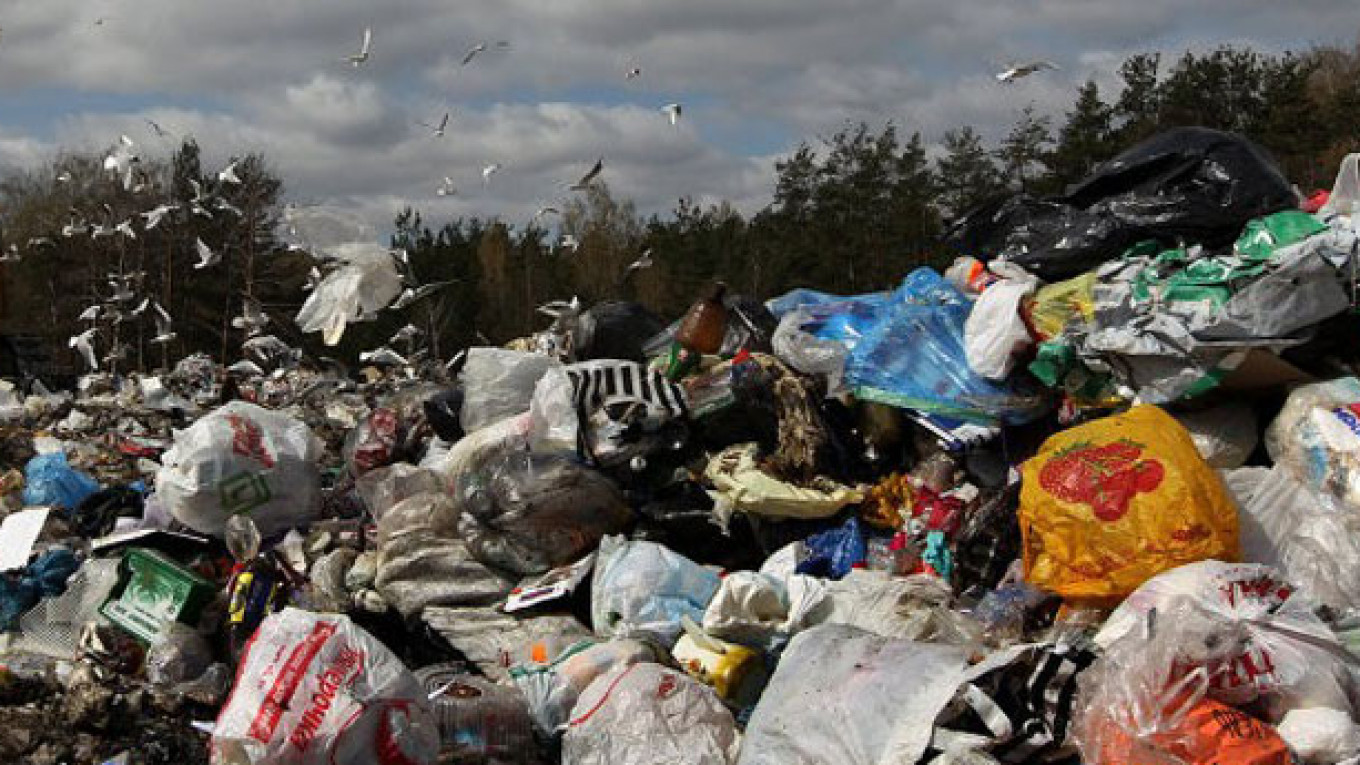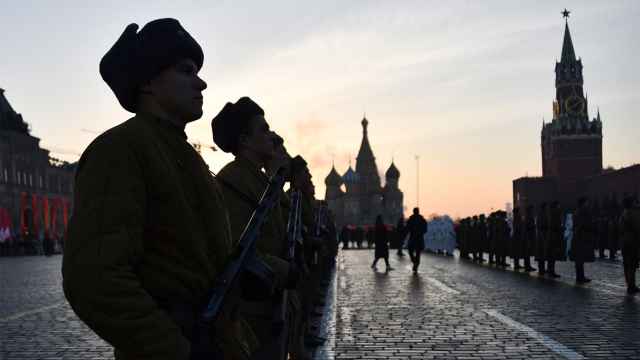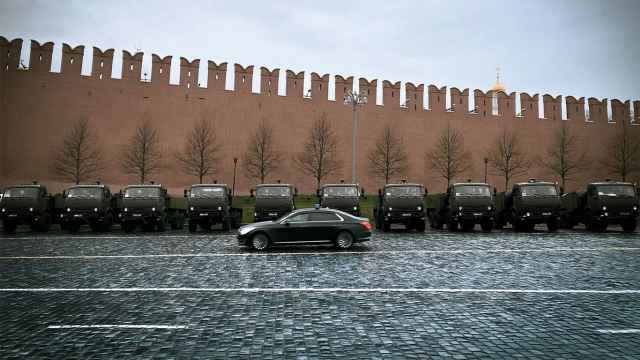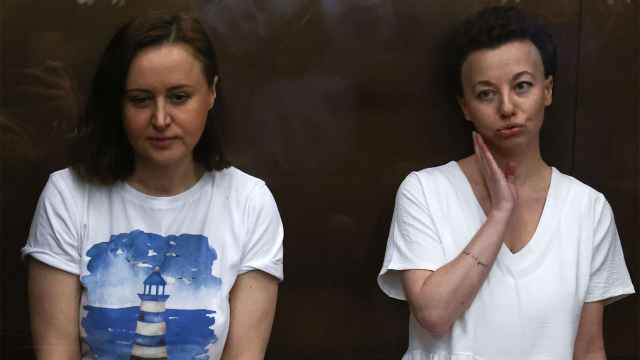Carrots will not grow in the village of Dyakovo, 40 kilometers from Moscow.
Next door to Dyakovo is the Dmitrovsky dump, a landfill site as tall as a 10-story apartment building sprawled across an area the size of seven soccer fields. Leaking toxic substances into the subsoil and spreading a nauseating smell over the surrounding land, the dump dominates the village.
It is one of 38 landfills in the Moscow region, the result of three decades of haphazard waste disposal that only now is beginning to change, as local authorities are forced by swelling civil discontent to phase out landfill and incentivize private companies to separate, recycle and incinerate waste.
Like most of the region's landfill sites, the Dmitrovsky dump was opened in the 1980s. And like most of them, it is overfilled.
Moscow Times reporter Alexander Panin discusses his story on landfill sites in the Moscow region.
During the Soviet era, people could take their scrap metal, paper and glass to local collection points for recycling. For each bottle or can redeemed, the depositor would receive a few kopeks, which can add up to respectable sums of money. Most people used the system. In a period of relative scarcity, people consumed less so landfills were small.
As the Soviet Union unravelled and collapsed, this system ruptured. Inflation wrought havoc on the differential between prices and money earned at collection. The few kopeks to be gained by redeeming a glass bottle became worthless as prices soared.
Existing landfills were taken over by unscrupulous businessmen who cared nothing for recycling in their search for quick personal gain. More and more garbage was carted out of towns and cities and dumped on the cheap in landfills — both legal and illegal.
Meanwhile, volumes of garbage boomed as consumer culture arrived to be blessed by the new capitalist state in the 1990s and then fed by rising wealth in the 2000s.
But in parallel with the rise of consumption and the swelling of dumps, another transformation was going on — a freed market began to reflect Russians' appetites for suburban dachas, and a building spree pushed dacha settlements up against landfills long overdue for closure. Residents began to protest.
Poisoned Land
Even using water brought in from elsewhere, Margarita Murashkina, a Dyakovo resident in her 80s, cannot get vegetables to grow in her garden.
"We cannot drink water from the well and we cannot use it for crops. Nothing grows on this soil anymore," she said. The Dmitrovsky dump is easily visible from her home. Suspicious black liquid clogs her gutter and a foul smell often hangs in the air.
She is not the only discontented person in Dyakovo. Ramil Bulatov, a resident in his 50s, is the head of a group of local activists who have been trying to close down the site for years.
"Tests of water, air and soil have shown that the whole Mendeleev's periodic table [of elements] can be found here. Heavy metal residues in the water exceed normal levels by 200 times," Bulatov said.
The Dmitrovsky dump has been slated for closure three times, and three times the date has been overrun, allowing the landfill site to bulge to 64 hectares. What once was an inconvenience has become dangerous.
"It is very sad to see this happening, to see the land and the people being poisoned," Murashkina said.
Mountains of Garbage
The Moscow region absorbs a fifth of all waste generated in Russia, according to local authorities. More than 120 million tons of garbage have accumulated, and about 10 million tons more are added every year, much of which comes from Moscow city, which has an official population of 12 million — making it Europe's biggest city — and an unofficial population of up to 18 million.
"Most [of the country's] regions, with their vast territory, do not face the problem of where to store waste, but the Moscow region is simply running out of space," said the head of the Moscow region's ecology and natural resources department, Anzor Shomakhov.
All previous extensions of service life aside, the region's authorities have said 80 percent of all existing landfill sites will reach their capacity limit by 2015.
Last year, Moscow region governor Andrei Vorobyov lobbied the closure of 24 landfills located near towns and settlements. President Vladimir Putin gave his blessing to the initiative, and the long overdue process began to gather momentum.
Six landfills have been shut down over the past year, and another 18, including the Dmitrovsky dump, are scheduled for closure by the end of 2014.
But the problem of how to deal with the flow of new rubbish remains. Existing landfills have enough capacity to last for about three years, according to Moscow region authorities. The solutions proposed suggest a sea change in attitudes toward social groups and business.
More than 90 percent of all waste in Russia is currently disposed of in landfills. The new goal in Moscow and the Moscow region is to separate the garbage, recycling or incinerating a large part and committing only the remains — about 35 percent — to landfill.
Some countries, such as Switzerland, recycle up to 80 percent of their waste, and the companies involved in waste disposal are generating millions of euros in revenue. A number of Russian companies, smelling change on the wind, are getting into the garbage business.
An Unprofitable Business
At least three companies have already set up garbage sorting facilities around Moscow, at which waste is separated into various types — paper, plastic, glass and tin cans — before being compressed into blocks and sent either to be recycled or to landfills, where at least the waste occupies less space.
But they may be getting into the business prematurely.
"Setting up recycling or waste processing facilities is unprofitable. It is still easier to pay a nominal 100 rubles to have unsorted waste taken to a landfill," said Vladimir Smirnov, head of Econ, which operates sorting and packing facilities in the Moscow region.
Taking the decision to invest, Econ gambled that government policy would change in the next few years, he said.
While legislative change has not materialized, Shomakhov at least understands the problem — that waste processing plants have no guarantee of receiving a fixed amount of garbage each month. There is no law banning the dumping of waste without preliminary sorting and processing, and so it is taken where it is least expensive, he said.
"What is needed is a number of professional companies that would be responsible for every link of the chain — gathering, sorting and disposing of garbage. If there is responsibility only for a single link, the whole chain is broken," said Sergei Andronov, corporate communications executive at Lassila & Tikanoja, a Russian-Finnish garbage processing company that also owns processing facilities in the Moscow region.
This is exactly what is happening, he said: one company collects the garbage, while another supervises the landfill. The few sorting companies that exist are a separate and vulnerable business.
In Dubna, the home of a nuclear research institute on the north edge of the Moscow region, L&T has taken the initiative by managing the whole waste disposal chain, Andronov said. The company has installed containers for separate types of garbage across the town — which it says locals have have taken to using — bringing down separation costs and giving the company a steady flow of garbage.
But a bright and profitable future still depends on lawmakers, Andronov said.
Change is Coming
The gamble of arriving early may pay off. Squeezed between the crisis of landfill capacity and local discontent, both Moscow and Moscow region authorities have placed banning the dumping of waste without preliminary sorting and processing high on their list of priorities.
With the new laws in hand, they hope to build at least five processing plants with the help of private investors that will not just separate and compress waste, but recycle and incinerate most of the garbage on the spot. The remains — ideally 35 percent — will be buried in new adjoining landfill sites.
In total, the number of new landfill sites will be restricted to less than 10, Shomakhov said. They will be using the region's last reserves of space, and should this time be used wisely, he said.
The haphazard approach of the past will be dispensed with — prospective sites are being selected them using a number of technical parameters, he said. New landfills cannot be placed near towns or settlements, and proposed sites will be offered for public scrutiny, Shomakhov said.
While Margarita Murashkina's Dyakovo carrots may not grow for a while yet, the danger to other people's carrots may be ebbing.
Contact the author at a.panin@imedia.ru






